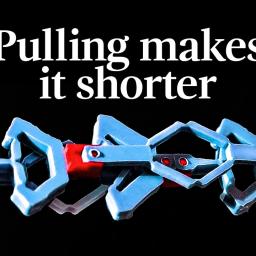The Paradoxical Physics Behind a Mechanism That Shrinks When Pulled

Derek Mullerand Gregor Cavlovic ofVeritasium explained the paradoxical physics of Hooke's Law, which is behind a seemingly simple mechanism that counterintuitively shrinks when pulled. The device, invented byBas Overveldeand histeamatAMOLFinAmsterdam, utilizes a system of springs that transfer energy based on the amount of stress applied to each end. When the device is pulled, one of the springs snaps open, transferring the weight and causing it to shrink.
How an unlikely physics paradox controls these counterintuitive structures.
Another theory they explored is known as Braess' Paradox, which applies to other systems subject to force, such as road closures or electrical lines. The paradox lies in whether the solution makes things better or worse.
It's now known as Braess's paradox and it is the reason why New York traffic got better after 42nd Street was closed on Earth Day. ...It turns out mathematicians actually modeled the whole city in 2008 and they found 12 roads that were redundant and could be cut to actually reduce traffic. And it's not only New York. The paradox showed up in Boston, London, Seoul. In fact, if you were to randomly add a new road to just about any city, you'd have an equal chance of making the traffic better as worse.
subscribe to the Laughing Squid Newsletter
The post The Paradoxical Physics Behind a Mechanism That Shrinks When Pulled was originally published on Laughing Squid.